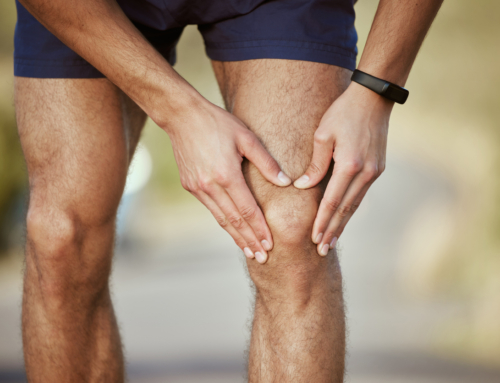Life is hard on the body! How we sit, sleep, move (and don’t move) can all cause areas of repeated stress on our body’s structure.
If this stress is repeated often enough, collagen will start to accumulate and adhere to the tissue that is under stress.
When I first started training, I was constantly loading forty-five pound plates on and off of machines for clients. I was also unknowingly using my dominant right arm more than my left.
Then boom! I see myself in the mirror one day and notice my right trap is much bigger than my left. The repeated stress of loading and unloading with the same arm had over-developed and tightened my right side.
This incident sparked me to investigate how clients hold bags, work, stand or sit, and what I discovered was that the human body will always adapt to the stresses we place on it.
Now, those adaptations might seem fine for years, but trust me, they will present themselves. When they do, it’s often not pleasant.
The body is amazing, and good postural alignment is at the heart of so many bodily functions, including breath, organ function and overall functional strength. The neuro-fascial web, which connects muscle to muscle and is responsible for both posture and movement, is slightly contractile, innervated and hydrated. It plays the leading role in holding our posture. When we prepare our clients for big races or sporting events, functional alignment is at the core of their programs. You can be as strong as ox, but if your alignment is off–snap, crackle and pop! The stresses of load and power can pull a calf or hamstring in an instant. This is not new information but for me, at the time, it was like “Wow! Alignment is everything!”
Some notes on alignment and posture : What we share with our Nimble Fitness clients is to play with their posture a little bit. This means you have to:
- Get to know yourself. Look in the mirror and assess your head and shoulder alignment. Close your eyes and feel how the weight is distributed through your feet. Are you 80% on one foot and 20% on the other? Lay down on a yoga mat and use the ground to assess how your body is presenting to the floor. Does one leg feel longer than the other? What can you feel? If you can’t feel, you just might be over-stressed.
- Assess what you are doing repeatedly every day. This will reveal where you might be tight or weak. This is a game changer. If you can shift your bad posture habits it just might keep you out of pain or get you out of pain. Do you have a good ergonomic desk? Do you carry a heavy bag on the same shoulder every day? Do you shift weight on one hip when speaking to others? The list is endless!
- Buy some self-massage tools. A soft roller, harder roller and trigger point ball or lacrosse balls would be a good mix. Use these to explore where your fascia tissue may be tight. Developing a self-fascia release practice is at the foundation of every holistic training program!
- Breathe and stretch. It’s important to be in your body when exploring your flexibility. Your head would spin with how many times we assess a new potential client in Nimble and they are dead wrong about their flexibility. It’s vital to never stop being aware with our body and understanding the direction our tissue health is headed. Use a four second nasal inhale and six second nasal exhale while going through your stretch or yoga protocol. Slow down and pay close attention to any differences from side to side. Tightness, blocking and weakness will present itself, but you have to be present! If you’re checked out while moving your results will suffer.
- Play. Have fun with your training! Be nice to yourself and challenge yourself. Get to know this magical body of yours. It’s special and no matter what your little voice is saying, you are beautiful!
Namaste
Daniel





